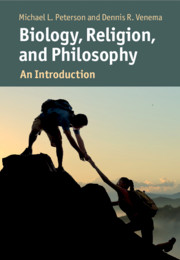Book contents
- Biology, Religion, and Philosophy
- Cambridge Introductions to Philosophy and Biology
- Biology, Religion, and Philosophy
- Copyright page
- Dedication
- Contents
- Acknowledgments
- Introduction
- Part I General Issues
- 1 Science, Biology, and Religion
- 2 The Origin and Nature of Life
- 3 The Question of Design in Living Systems
- 4 Biology and the Problem of Natural Evil
- 5 Progress, Purpose, and Providence
- Part II Religion and Human Biology
- Glossary
- Further Reading
- Index
4 - Biology and the Problem of Natural Evil
from Part I - General Issues
Published online by Cambridge University Press: 25 March 2021
- Biology, Religion, and Philosophy
- Cambridge Introductions to Philosophy and Biology
- Biology, Religion, and Philosophy
- Copyright page
- Dedication
- Contents
- Acknowledgments
- Introduction
- Part I General Issues
- 1 Science, Biology, and Religion
- 2 The Origin and Nature of Life
- 3 The Question of Design in Living Systems
- 4 Biology and the Problem of Natural Evil
- 5 Progress, Purpose, and Providence
- Part II Religion and Human Biology
- Glossary
- Further Reading
- Index
Summary
The problem of evil has perennially been the strongest objection to religious faith among nonbelievers as well as a major source of crises of faith among believers. The problem centers on the alleged incompatibility between God and evil of all kinds in the world that he supposedly created and governs. On the face of it, this incompatibility seems to support agnosticism or atheism and thus creates difficulties for religion, particularly theistic religion. Since the mid-twentieth century, formulations of the problem – as well as responses to it – have become increasingly technical due to the rise of the analytic philosophy of religion. Moral evil was a salient point of debate, and still is, but theistic replies revolving around the concept of free will have come to be considered quite effective.
- Type
- Chapter
- Information
- Biology, Religion, and PhilosophyAn Introduction, pp. 81 - 103Publisher: Cambridge University PressPrint publication year: 2021

